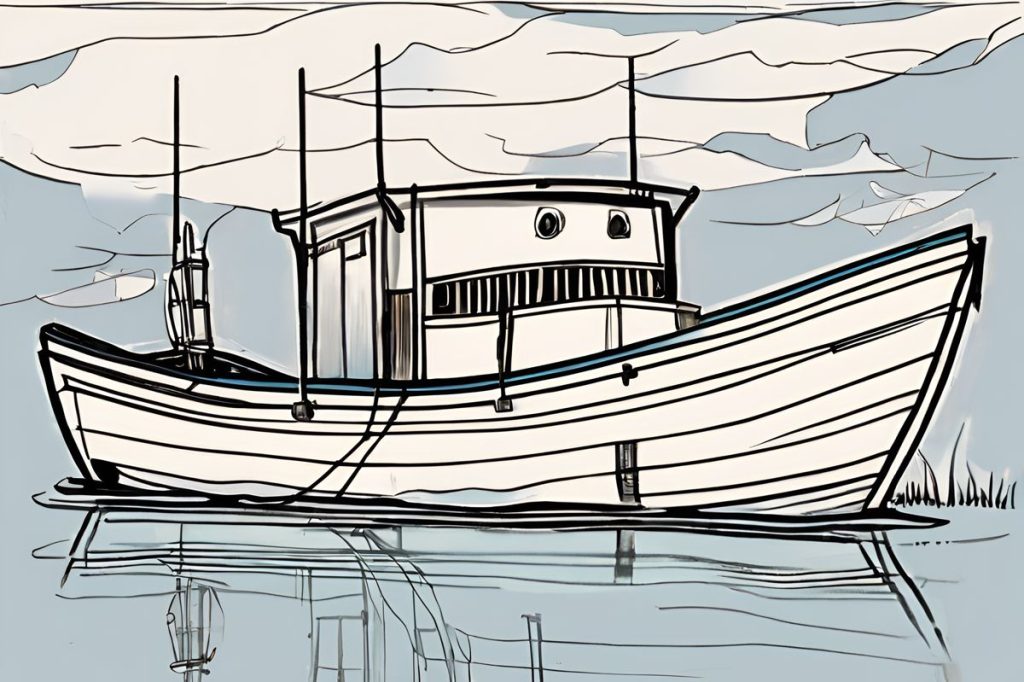The Lambousa ship, a symbol of Cyprus’s maritime heritage, sets sail from Limassol’s old port, carrying with it stories of the island’s seafaring past. Preserved by the Cyprus University of Technology and now digitally immortalized on Europeana, this vessel serves as a floating museum, reminding all of Cyprus’s enduring connection to the sea.
What is the significance of the Lambousa ship in Cyprus’s maritime heritage?
The Lambousa, a preserved relic of Cyprus’s seafaring legacy, symbolizes the island’s maritime history and the Greek shipbuilding tradition. Meticulously conserved by the Cyprus University of Technology, it’s digitally immortalized and accessible on Europeana, serving as a floating museum and a reminder of Cyprus’s enduring connection to the sea.
A Voyage Through Time
The Lambousa, a distinguished relic of Cyprus’ seafaring legacy, embarked on a new chapter last Friday as it set sail from the old port of Limassol. This vessel, unparalleled in its preservation in Cyprus, has a rich history, having navigated the waters off Kyrenia before 1974 and subsequently the seas near Limassol. This boat stands as a testament to the enduring Greek shipbuilding tradition, having been constructed in 1950 in the Greek shipyards of Perama, Piraeus, and later registered in 1965 at the port of Famagusta.
Named after the ancient Cypriot city of Lambousa, this storied ship serves as a bridge to the past, when it played an integral role in the island’s fishing industry and its broader economy. Its voyage is not just through the Mediterranean waters but through time, carrying stories of the island’s maritime history.
Preserving Cultural Heritage
The Cyprus University of Technology (Tepak) has taken a pivotal role in the preservation of the Lambousa, ensuring that its story remains alive for future generations. Through the diligent efforts of Tepak’s digital lab, the Lambousa has been meticulously conserved, both physically and digitally. Using cutting-edge photogrammetry techniques, the team has created a detailed 3D model of the boat, capturing both its intricate exterior and interior.
This digital conservation project, highlighted as one of Tepak’s most significant accomplishments, allows for a comprehensive documentation of the vessel, immortalizing its structure and design. Dr. Marinos Ioannides, the Unesco Chair at Tepak, expressed pride in the initiative, emphasizing the importance of such digital preservation efforts in safeguarding Cyprus’s rich cultural heritage.
A Digital Life Beyond the Waves
The Lambousa’s legacy not only remains afloat in the physical world but also sails through the digital realms. The ship has found its place in the digital global library, Europeana, where its complete data has been recorded and made accessible to the public. This initiative ensures that the Lambousa’s historical significance is recognized and available internationally, offering a window into Cyprus’s maritime past.
The vessel, characterized as a Liberty-type ship—a class of cargo ship constructed in the United States during World War II—holds a unique position in the annals of nautical history. The Lambousa is more than a mere fishing trawler; it embodies the spirit of an era and the resilience of a community. Details about the ship’s storied past and present status are available through the dedicated project website, inviting the curious to explore this floating museum and its captivating history.
Continued Legacy
While the Lambousa now rests in the tranquil waters of Limassol’s old port, its spirit ventures far beyond the harbor. The vessel’s revival and the meticulous digital documentation work by Tepak and its partners ensure that the Lambousa remains a symbol of Cyprus’s maritime identity and a cherished piece of living history. Its story continues to inspire and educate, serving as a reminder of the island’s deep connection with the sea and its people’s enduring craftsmanship.
The Lambousa’s journey is more than a tale of preservation; it’s a narrative that intertwines the skills of ancient shipbuilders, the legacy of fishermen, and the innovative technologies of our time. It is a vessel that has weathered storms and the passage of time, now anchored in the collective memory of Cyprus, immortalized for posterity in both wood and bytes.
How was the Lambousa ship preserved and what is its significance in Cyprus’s maritime heritage?
The Lambousa ship was meticulously conserved by the Cyprus University of Technology, both physically and digitally. It serves as a symbol of Cyprus’s maritime history, highlighting the Greek shipbuilding tradition and its connection to the sea. The vessel’s preservation ensures that its story remains alive for future generations.
What is the history behind the Lambousa ship and why is it named after the ancient Cypriot city of Lambousa?
The Lambousa ship has a rich history, having navigated the waters off Kyrenia before 1974 and later near Limassol. It was constructed in 1950 in the Greek shipyards of Perama, Piraeus, and registered in Famagusta in 1965. Named after the ancient city of Lambousa, the vessel played a significant role in Cyprus’s fishing industry and economy, serving as a bridge to the island’s past maritime activities.
How did the Cyprus University of Technology contribute to preserving the Lambousa ship’s cultural heritage?
The Cyprus University of Technology played a pivotal role in the preservation of the Lambousa ship. Through its digital lab, the university meticulously conserved the vessel both physically and digitally, creating a detailed 3D model using advanced photogrammetry techniques. This digital conservation effort ensures that the Lambousa’s structure and design are immortalized for future generations.
Where can the public access information about the Lambousa ship and its history?
The Lambousa ship’s complete data is accessible on Europeana, a digital global library, where its historical significance is recognized and available internationally. Additionally, details about the ship’s past and present status can be found on the dedicated project website, inviting individuals to explore the vessel’s captivating history as a floating museum and a symbol of Cyprus’s maritime identity.

